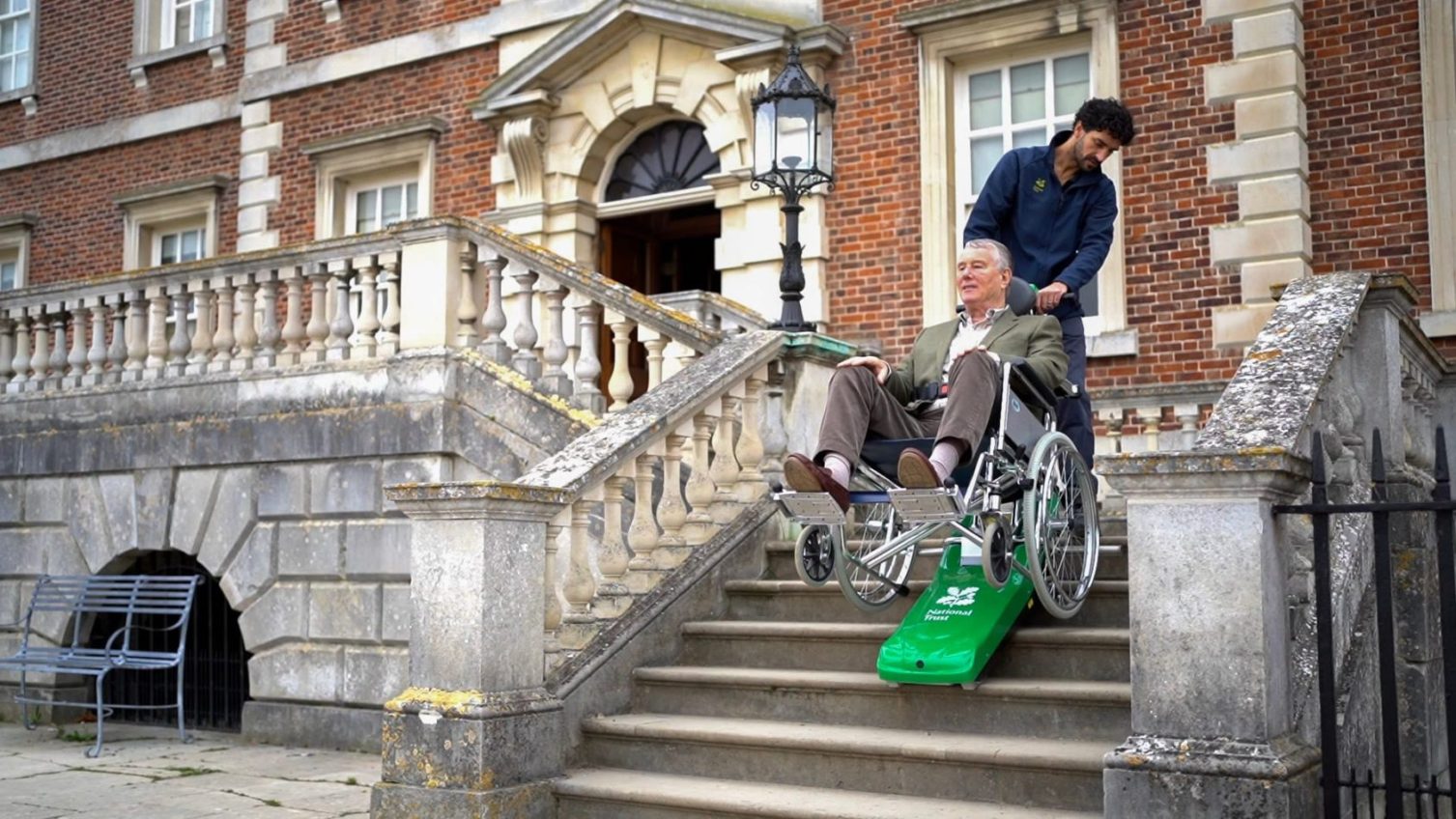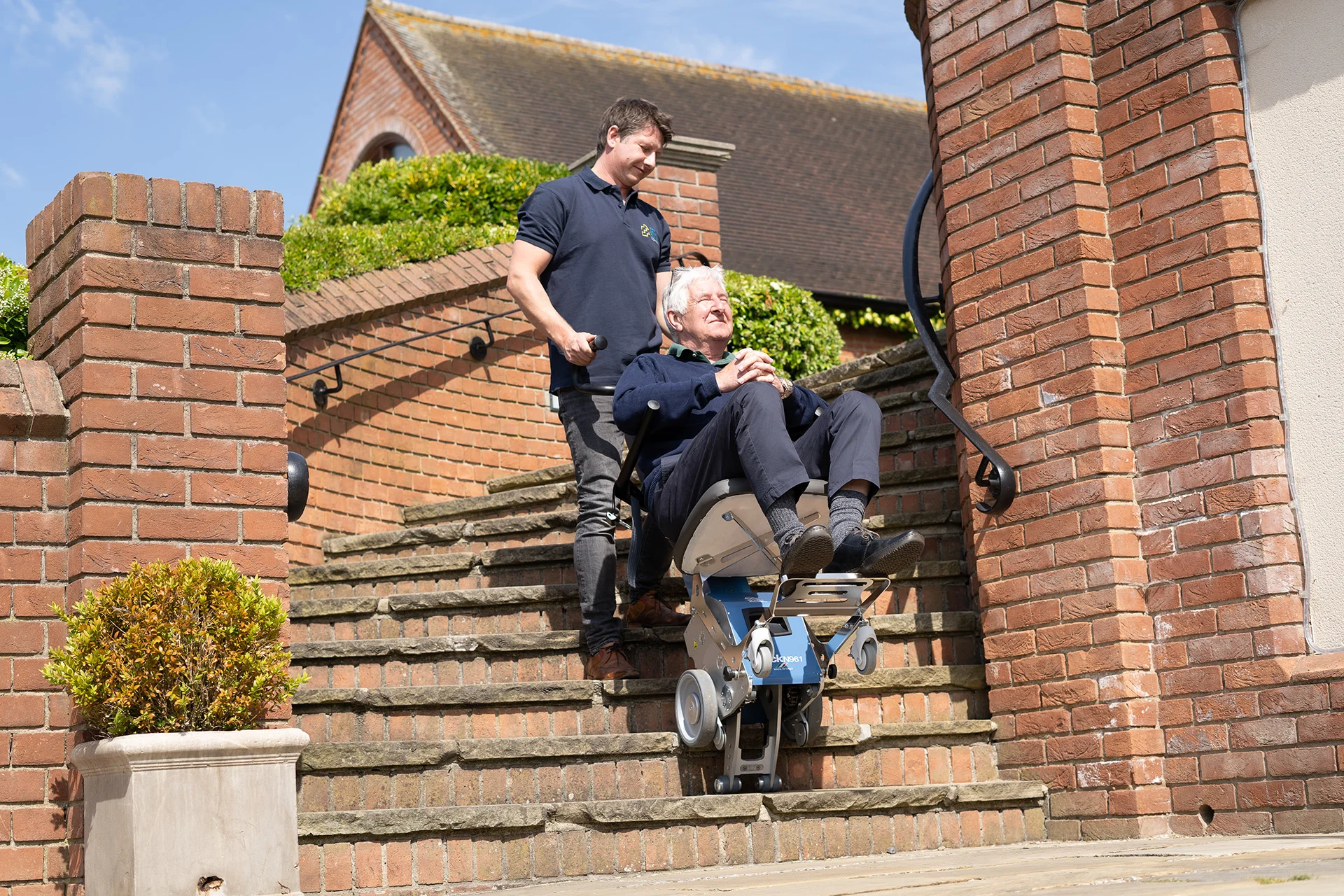Stair Climbers Improving Access For Wheelchair Users At The Cruciform Building (UCL) Stair climbers can play a vital role in …
Stair climbers: A Practical Alternative to Stair Lifts
Improving mobility at home and in the workplace
When it comes to improving mobility in a multi-level home or building, stair lifts have long been the go-to solution for people who have difficulty navigating stairs. These devices can significantly improve independence and access for individuals with mobility challenges. However, stair climbers—often less well-known—are becoming a highly effective and often more affordable alternative to traditional stair lifts.
In this blog post, we will explore what stair climbers are, how they compare to stair lifts, and why they might be the ideal solution for some individuals.
What Are Stair Climbers?
A stair climber is a mobility device designed to help individuals safely ascend and descend stairs. Unlike a stair lift, which is typically installed along the length of a staircase and requires the user to remain seated while the device moves up or down, a stair climber is a portable, handheld device that the user operates while standing. Stair climbers are often compact and can be used on any set of stairs, making them ideal for those who want mobility assistance without the need for structural changes to their home.
Stair climbers are usually battery-powered and can carry individuals or loads (such as groceries) with ease. Some models are designed to accommodate various types of stairs, from straight to spiral or curved, ensuring versatility in different environments. These devices work by using tracks or wheels that grip the edge of the stairs, lifting the user in a controlled, steady motion.
How Do Stair Climbers Compare to Stair Lifts?
Both stair climbers and stair lifts serve the same general purpose: to help people navigate stairs when they have limited mobility. However, the two devices differ in terms of operation, installation, cost, and flexibility. Below are some key comparisons between stair climbers and stair lifts:
1. Portability
One of the main advantages of stair climbers is their portability. Stair climbers are compact and can be easily moved between different locations, including different homes or areas within the same building. Unlike stair lifts, which are fixed in place and often require permanent installation along the staircase, stair climbers can be taken along for the ride when traveling or visiting friends and family. This makes them an excellent option for individuals who need mobility assistance but do not want to commit to a permanent installation.
2. Installation and Space Requirements
Stair lifts typically require the installation of tracks or rails along the staircase, which can be a costly and time-consuming process. The installation may also be disruptive and may not be an option for renters or individuals who do not own their property. Additionally, stair lifts require a certain amount of space on the staircase to be properly installed, which may be a problem in narrower or more congested stairwells.
On the other hand, stair climbers do not require any permanent installation. They are used manually by the person with mobility challenges or with the assistance of a caregiver. Since they don’t require any modifications to the home, they are an ideal choice for individuals who live in rental properties or who prefer not to make permanent changes to their living space.
3. Cost
The cost of a stair lift can vary significantly based on the type of stairs, whether the lift is custom-built, and the complexity of the installation. On average, stair lifts can cost between £4,000 and £10,000, and this does not include ongoing maintenance, which is necessary to keep the system functioning smoothly over time. If the staircase is particularly long, curved, or has multiple landings, the price can increase substantially.
In contrast, stair climbers tend to be much more affordable, with prices often ranging from £4,000 to £6,000 depending on the model and features. Since they do not require installation or ongoing maintenance, stair climbers are generally considered a more budget-friendly option. They also provide a one-time purchase, making them more cost-effective in the long run, especially for individuals who do not need to navigate stairs on a daily basis.
4. Ease of Use
Stair lifts are relatively simple to use. Once installed, the user simply sits down and activates the lift, which carries them up or down the stairs at a steady pace. Stair climbers, while still easy to operate, require the user to remain standing and manually control the device as it ascends or descends the stairs. Depending on the specific model, the user may need some physical strength or assistance from a caregiver to guide the stair climber.
For individuals who can stand and have enough strength to operate the stair climber, these devices can be an excellent way to maintain some independence. They are often easier to use for people with limited mobility who do not require complete assistance in sitting down or standing up.
5. Versatility
Stair lifts are generally designed for one type of stairway—typically a straight set of stairs. For curved or spiral staircases, custom stair lifts are available, but these models can be much more expensive. In contrast, stair climbers are more versatile and can often be used on a variety of stair designs, including curved or irregular stairs. The mobility of a stair climber makes it an excellent option for people who need to navigate different staircases in various settings, such as in a multi-level home, public buildings, or even commercial spaces.
6. Maintenance
Stair lifts generally require regular maintenance, including checking the batteries, lubricating the moving parts, and ensuring that the lift functions smoothly. If anything breaks or malfunctions, repair costs can add up, especially if the system is older.
Stair climbers, on the other hand, typically require less maintenance. Since they are operated manually, there are fewer mechanical components that can break down. The key maintenance tasks involve checking the batteries and ensuring the tracks and wheels are functioning properly.
Why Choose a Stair Climber?
While stair lifts are often the preferred choice for individuals who have significant mobility impairments or need to use the device on a daily basis, stair climbers offer several benefits that make them an attractive alternative:
- Affordability: With lower upfront costs and minimal maintenance, stair climbers are a budget-friendly option for individuals looking to improve their mobility without breaking the bank.
- Portability: If you move frequently, or want a device that you can take with you when traveling, stair climbers are an excellent solution, offering the flexibility to use the device in different environments.
- Space-saving: Since stair climbers don’t require installation or take up permanent space in your home, they are an ideal choice for individuals living in smaller spaces or rental properties.
- Independence: Stair climbers allow users to maintain a level of independence by giving them the ability to ascend or descend stairs without relying on a caregiver or assistance from a lift operator.
Conclusion
For those who are considering options for navigating stairs safely, stair climbers offer a practical, affordable, and versatile alternative to traditional stair lifts. Whether for a multi-level home or when traveling, stair climbers offer a convenient and space-efficient way to improve mobility without the need for costly or permanent installations. Before making a decision, it’s important to assess your specific needs and preferences, but for many individuals, a stair climber can be a great way to regain access to the full range of spaces in their homes and beyond.
Further information
Several manufacturers of stair climbers include KSP Italia and AAT. For free advice and further information click on the link below..
Mobility access solutions and ramp alternatives for Wheelchairs




